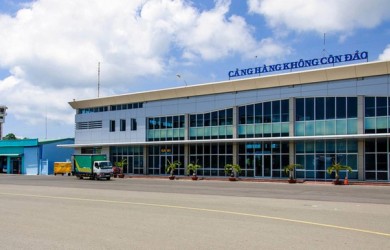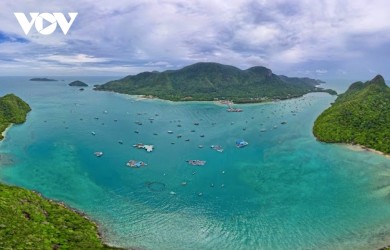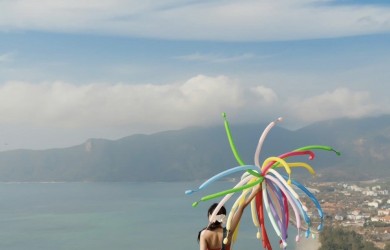Pier 914
Regarding the history of the pier construction, there has been no document to determine the exact commencement date so far. It is only known that in 1874, the Pier was already formed, with 120 meters long, 4 meters wide, and a sketch of 107 meters, from the edge in front of the gate of the Lord Palace straight to Con Son Bay. People call the Pier by the numbers 871; 914; 915 to commemorate the number of people who had died during the construction of the Pier. Those numbers are more or less approximate. The Pier relic is located close to Ton Duc Thang Street, opposite the Island Lord Palace. There is Cong Quan House on the left and Ton Duc Thang Park on the right (i.e the old Department of Net) of the Pier.

The most profound imprints left on this historical site for more than a century are the stone slabs. The large number of stones is scattered, and arranged in layers along the horizontal and vertical embankments. Those large blocks of stones, weighing many tons, had exhausted and crushed many prisoners when they brought them there from Chua Mountain (Nui Chua). If they could not do it, they would die from the whips; if they could, they would die from exhaustion. That painful time seems to still resonate in every stone and the prisoners’ song depicts the forever hatred:
“Côn Lôn ơi, viên đá mạng người...”
(Which means every stone in Con Lon came with a human life)
No one knows exactly how many people were crushed by avalanches, stones, or died from whips when transporting stones for building the Pier when grinding stones along the coastal road. The Pier is the place that marks the first exile of tens of thousands of prisoners on this prison island, with all the humiliation of the preemptive blow from the Pier to the prison. Tens of thousands of people just set foot there once and then had to stay forever in Hang Keo, Hang Duong, Co Ong, Hon Cau... The Pier was also an important contact point among Con Dao political prisoners, the French Socialist Party, the French Communist Party, the Cochinchina Party Committee, the Southern Resistance Administration Committee, and the Saigon - Gia Dinh Party Committee. Marxist-Leninist classic theoretical books, progressive literary books, newspapers, resolutions of the Communist International of our Central Committee of the Communist Party, letters and directives from the Regional Party Committee... all were delivered to the prisoners thanks to this Pier.

The Pier used to be lined with red flags with yellow stars in the successful days of the August Revolution (1945) in Con Dao. More than 2,000 political prisoners returned to the mainland from there to continue the long and heroic resistance war against the French. Some had become leaders of our Party and State over the years. At the end of 1954, the French colonialists also had to hand over nearly 600 prisoners and over 1,000 people with prison sentences to the Ho Chi Minh government across the Pier. On May 1, 1975, Con Dao political prisoners took advantage of the situation and rebelled to take full control of Con Dao.
On May 4, 1975, on the first boat to liberate Con Dao, 500 silkscreen prints of Uncle Ho were
Source: Department of Culture and Sport of Ba Ria-Vung Tau Provice
Newer articles
Older articles

















